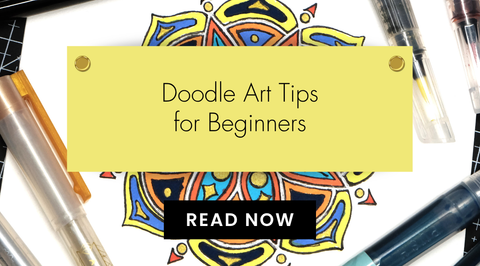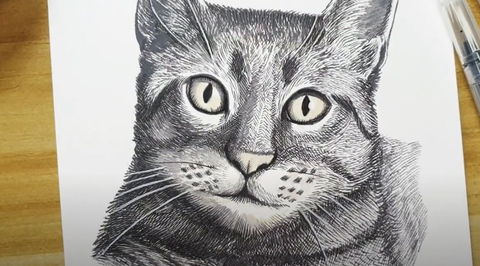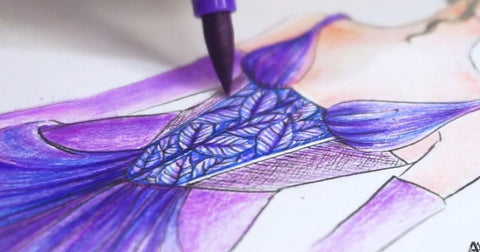Into The Creative Mind of Frida Kahlo: Her Art, Style, and Story
Last Updated: July 29, 2024
"Passion is the bridge that takes you from pain to change." - Frida Kahlo.
When it comes to enumerating the women that significantly impacted art history, Frida Kahlo stands as an iconic figure in the realm of artistic expression. You may recognize Kahlo for her striking self-portraits that delve into the depths of human experience or her unique blend of indigenous Mexican and European influences, seamlessly woven into her style.

Self Portrait by Frida Kahlo
Today, we will examine the vivid strokes of Kahlo's brush, the symbolism of her creations, and the indomitable spirit that defined her existence. We will also uncover the intricate connections between her art and her personal story, which she so bravely shared with the world. Join us as we unravel the layers of Frida Kahlo's remarkable and timeless legacy, which continues to captivate hearts and minds to this day.
Womanhood and the Colors of Pain: Her Life as an Artist
Born on July 6, 1907, in Coyoacán, Mexico City, Frida was the third of four daughters in her family. Her father, Guillermo Kahlo, was a German-Hungarian immigrant and a photographer, while her mother, Matilde Calderón y González, hailed from a Native American and Mexican-Spanish lineage.
Frida's childhood was marked by both joyous moments and significant challenges. At the tender age of six, she contracted polio, which left her right leg visibly thinner and weaker than the other, giving her a limp for the majority of her life. Her ailment led to her being bedridden for many months. This physical setback led to a deep sense of self-awareness and would later influence her artwork's themes of pain and suffering. From then on, she has worn long skirts to cover up her unequal gait.

However, despite her health struggles, Frida exhibited a fierce and independent spirit from a young age. Encouraged by her father, she became active in sports, even taking up activities that weren't usual for girls, such as wrestling, during her time. She was known for her rebellious nature and refusal to conform to societal norms, characteristics that would become defining elements of her persona and artistic expression.
Initially, she was interested in pursuing a career in the health sciences. However, fate had other plans for her. In 1925, Frida was involved in a bus accident while riding with her then-partner, Gomez Arias. From the accident, she sustained a litany of fractures, including a shattered spinal column, which would, later on, leave her with a great deal of physical and psychological pain. She had to undergo almost 30 major operations, as a steel handrail impaled her through the hip, causing her not to be able to bear children later on in her life.
While recovering from her injuries, Kahlo began to study painting as a form of therapy and self-expression. Her parents supported her and brought her supplies, while she used a specially designed easel that allowed her to paint while lying down. Her subjects often included herself, her pain, and her experiences. She once said, "I paint self-portraits because I am so often alone because I am the person I know best."
While initially, she studied the works of the masters and replicated art movements such as Surrealism; she began to paint in her own distinctive, realist style. Kahlo's work is often associated with Surrealism, a movement that explored the unconscious mind and dreams. However, she rejected the label, preferring to describe her art as her own reality. She incorporated symbolic elements from Mexican culture, religious imagery, and her personal life into her paintings.
Later on, in 1928, she reconnected with her old childhood crush, Diego Rivera, a mural artist at the time, and showed him her paintings. Diego encouraged her to continue, and from then on, their romantic relationship quickly developed. Despite their age difference, their personalities and shared interests drew them together, leading to a tumultuous relationship that resulted in many paintings of suffering created by Frida.
Kahlo and Rivera got married on August 21, 1929. Their marriage was often characterized by extreme highs and lows. Both artists were known for their strong personalities and volatile tempers. Throughout their on-and-off marriage, Frida Kahlo suffered from insecurities and breakdowns, frankly due to Diego's many affairs, including the one with her younger sister, Cristina. She also suffered many miscarriages due to the injuries sustained in the bus incident.

Tree of Hope, Remain Strong by Frida Kahlo
However, despite their marriage troubles, Kahlo and Rivera's relationship extended beyond their personal lives to their artistic careers. They supported and influenced each other's work. While Rivera was already a well-established muralist, Kahlo's career was just beginning to gain recognition. She often felt overshadowed by his fame but eventually carved out her own unique artistic identity.
Eventually, Kahlo's work gained recognition in the latter part of her life. She had her first solo exhibition in Mexico in 1953. Most of her best-known paintings often depicted her own emotions and struggles within the context of their marriage. Rivera himself appeared in some of her works, and his influence can be seen in her use of vibrant colors and bold imagery.
Thanks to her vivid depictions, her art, and life have been interpreted as expressions of women's experiences, pain, and resilience.
Frida Kahlo died relatively young - passing away on July 13, 1954, at the age of 47. The official cause of her death was listed as a pulmonary embolism. After her death, Diego Rivera redesigned La Casa Azul as a museum dedicated to her life, The Frida Kahlo Museum. It was opened to the public in 1958, one year after Rivera's death.
Transforming Pain to Paintings: Her Style and Techniques

The Two Fridas by Frida Kahlo
Frida Kahlo's art style is a mesmerizing fusion of symbolism, surrealism, and deeply personal expression. Her vivid self-portraits are at the heart of her artistic approach, which serves as a poignant avenue for self-exploration and emotional revelation. Each self-portrait is a window into her inner world, a realm where her experiences, both physical and emotional, intertwine with the symbolic imagery she weaves.
Kahlo's deliberate incorporation of animals, plants, and objects adds layers of meaning to her work, creating a rich tapestry of symbolism that reflects her Mexican heritage and indigenous roots. Monkeys symbolize lust, while thorns and roots embody pain and connection to the earth. Her artwork dances between reality and dream-like scenes, a testament to her mastery of blending surrealism with realism.
In addition, central to Kahlo's style is the celebration of her Mexican identity. She adorns herself in traditional Mexican clothing and challenges conventional beauty standards by depicting herself with a unibrow and facial hair. In every stroke, she weaves her identity into her art, profoundly stating the importance of cultural roots and self-acceptance.
A Feminist Icon: Frida Kahlo’s Most Famous Works
Frida Kahlo created a number of iconic and celebrated works throughout her artistic career. Some of her well-known paintings include "The Two Fridas," "Self-Portrait with Thorn Necklace and Hummingbird," "The Broken Column," "Self-Portrait with Cropped Hair," and "Roots."

Self Portrait with Monkeys by Frida Kahlo
Paint With the Language of Resilience Like Frida Today!
All in all, Frida Kahlo's art continues to captivate and inspire audiences around the world, offering a glimpse into her life, emotions, and enduring artistic legacy. Her works are not just paintings. They are powerful testaments to the human experience, symbols of strength that can be found in embracing one's true self - scars and all.
Through her art, Frida Kahlo has left an indelible mark on the canvas of art history, reminding us that our stories and struggles can become our most beautiful masterpieces. We hope you enjoyed reading through this biography on Kahlo's life and work! Don't forget to check out today's great artists on Meet The Artist Behind The Art and how they use art to express themselves in unique ways! You just might get inspiration for your next project!







Hello, Karen! That is awesome! Wow. And yes, we are big fans of Frida’s art too! Thanks for stopping by.
I love her style and paintings. I was notified through “family Search” I am a distant cousin of hers through her German Fathers line. I am only 7% German so I doubt any DNA the same